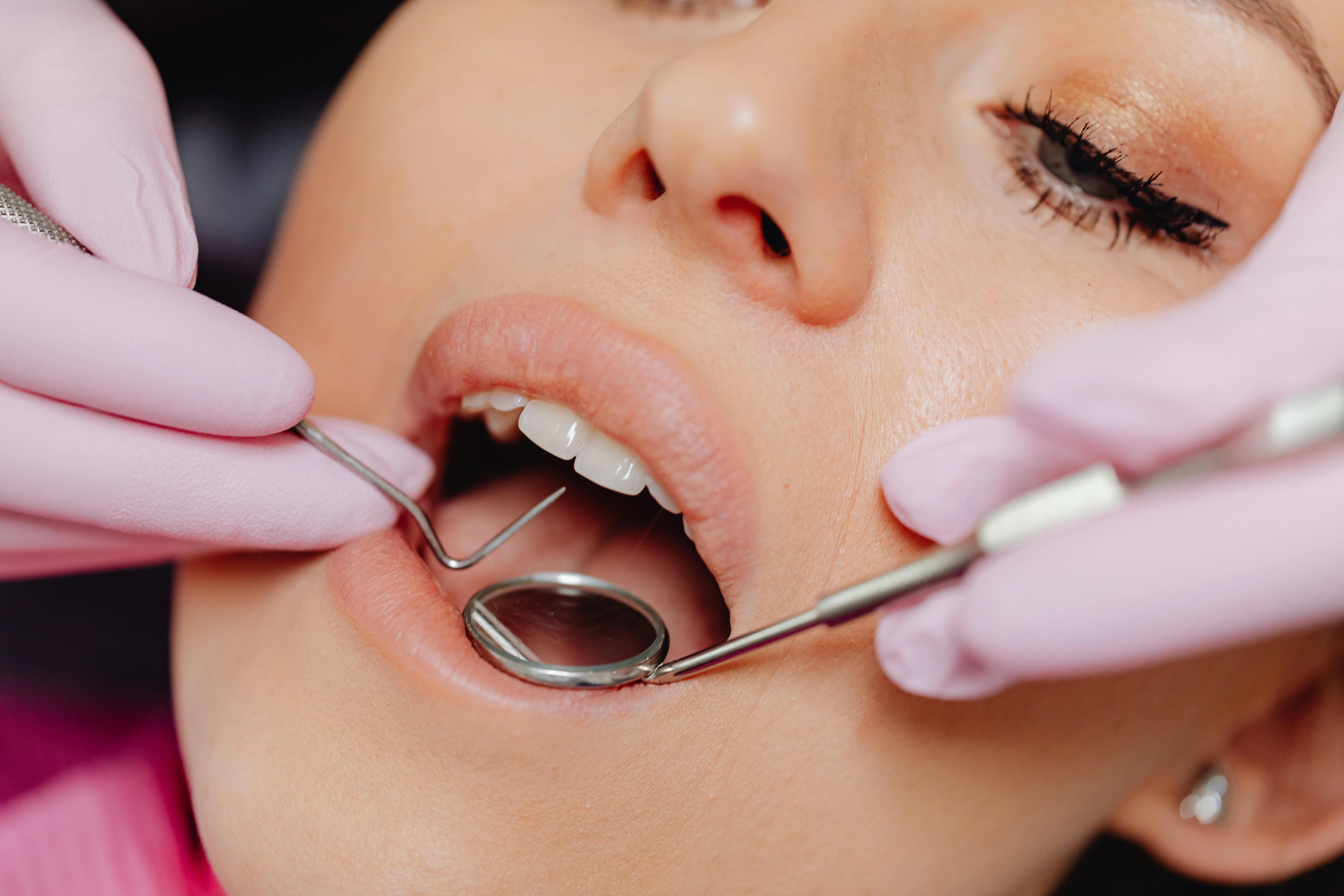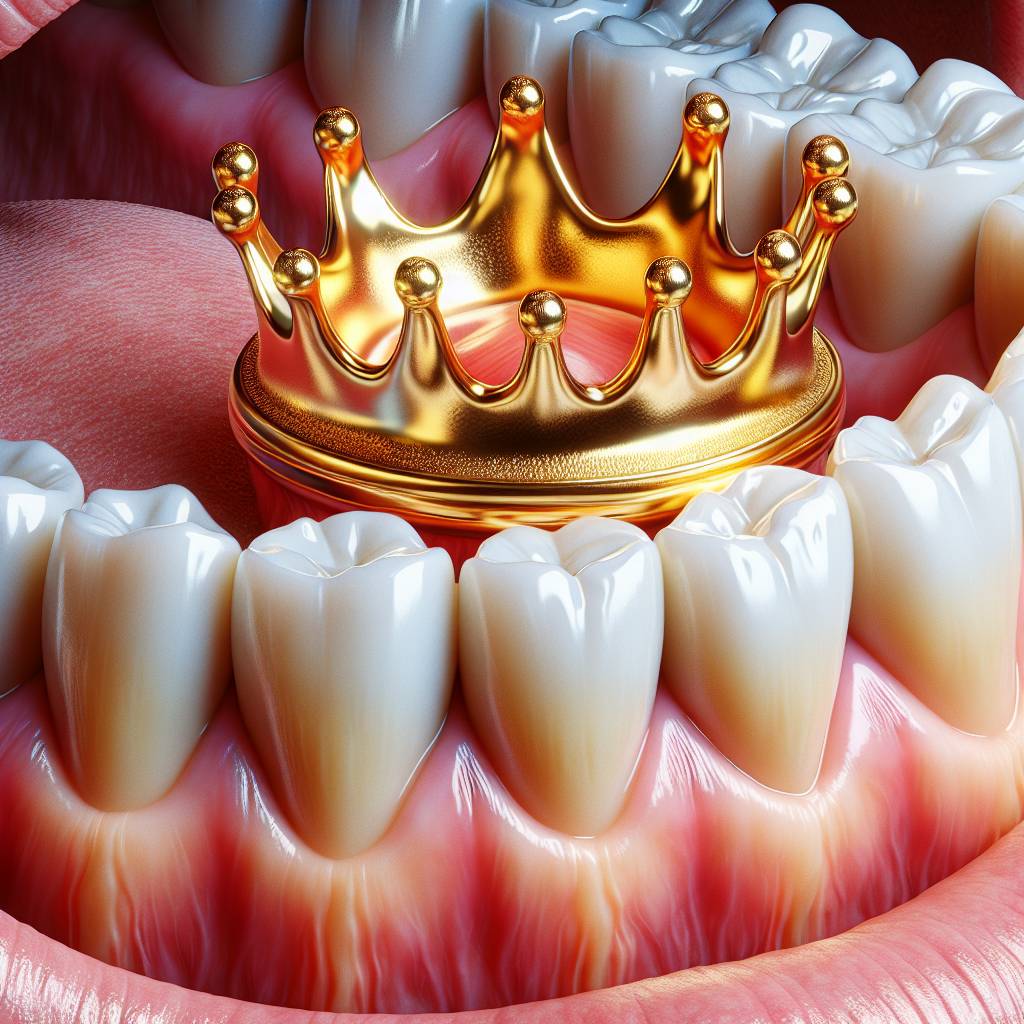A crown is a common dental restoration used to restore a damaged or decayed tooth. Crowns are custom-made, usually of porcelain, and fit over the entire surface of a tooth to improve the look and function of the tooth. They are also used to attach bridges, cover implants, or protect weak teeth from fracturing. When properly placed, a crown can provide aesthetic value as well as strength and stability to your teeth. So how does a crown look on your teeth?A crown on your teeth looks like a natural part of the tooth. It is usually made of porcelain or ceramic and is designed to fit snugly over a damaged, decayed, or discolored tooth. The color of the crown matches your existing teeth so that it blends in seamlessly with the rest of your smile. Crowns are often used to strengthen weakened teeth, restore the shape and size of a tooth, and improve its overall appearance.
What Is a Tooth Crown?
A tooth crown is a dental restoration that covers the visible portion of a tooth above the gum line. It is used to replace the existing structure of a damaged, decayed, or fractured tooth. Crowns are made from porcelain, metal alloys, and other materials depending on the needs of the patient. The purpose of a crown is to restore form and function to a damaged or decayed tooth, as well as protect it from further damage. Crowns can also be used for cosmetic purposes to improve the appearance of a discolored or misshapen tooth.
The process of getting a crown usually takes two dental appointments. During the first appointment, the dentist will prepare the tooth by removing any decay and shaping it into a peg-like structure that will support the crown. An impression of the prepared tooth is taken and sent to a dental laboratory where the custom-made crown is created. The second appointment involves fitting and cementing the crown onto the prepared tooth structure. Once in place, it should look and feel like your natural teeth.
Crowns are usually made from porcelain fused to metal (PFM) for strength and durability. All-porcelain crowns can also be used for more aesthetic purposes because they can be matched to your natural teeth color more accurately than PFM crowns. Porcelain fused to zirconia (PFZ) is another material option that provides excellent strength and aesthetics but may require additional preparation time due to its hardness.
Caring for your new crown is similar to caring for your natural teeth: brush twice daily with fluoride toothpaste and floss daily with an interdental cleaner between your teeth and gums. Regular dental checkups are recommended at least twice per year in order to check on your new crown’s health and make sure it remains properly placed on your prepared tooth structure.
What Are the Benefits of Getting a Tooth Crown?
A tooth crown can provide several benefits, including improved appearance, better function, and enhanced protection of the underlying tooth structure. A dental crown is a type of dental restoration that covers the entire surface of a weakened or damaged tooth, restoring its shape, size, strength and appearance. Crowns can be made from a variety of materials, including metal alloys, porcelain fused to metal or all-ceramic materials.
The placement of a tooth crown can offer several advantages for your oral health. One benefit is improved aesthetics; when a tooth is cracked or discolored due to decay or trauma, its appearance can be significantly improved with a dental crown. In addition to providing cosmetic benefits, placing a dental crown may improve your ability to chew and speak normally. A dental crown also helps protect the weakened underlying structure of the tooth from further damage by providing an extra layer of protection.
Crowns can also be used to restore teeth that have been affected by severe decay or trauma. When large portions of enamel are missing due to decay or fracture, a dental crown may be placed to restore the affected tooth’s shape and function and protect it from further damage. Additionally, crowns are often used when performing root canal therapy as they help provide additional support for the remaining structure of the treated tooth.
In short, getting a tooth crown offers many benefits for your oral health and overall wellbeing. With proper care and maintenance, a dental crown can provide lasting protection for your teeth while also improving their appearance and function.
Types of Tooth Crowns
A tooth crown is a cap that is placed over a tooth to restore its shape, size, strength, and appearance. There are several types of crowns available, each with their own advantages and disadvantages. The most common types of crowns include porcelain-fused-to-metal crowns, all-ceramic or all-porcelain crowns, gold or metal alloy crowns, and composite resin crowns.
Porcelain-fused-to-metal (PFM) crowns are the most common type of dental crown. They consist of a metal core that is covered with porcelain to give the tooth a natural look. PFM crowns are strong and durable and can withstand everyday wear and tear. However, they may not be the best option for people who have metal allergies due to the presence of the metal core.
All-ceramic or all-porcelain dental crowns are made entirely out of ceramic material. These types of crowns provide excellent aesthetic results as they closely mimic the color and translucency of natural tooth enamel. All-ceramic or all-porcelain dental crowns also reduce the risk of allergic reactions since there is no metal present in them. However, these types of dental crowns may be more prone to chipping or breaking than other types due to their lack of strength.
Gold or metal alloy dental crowns are made from gold or other metals such as nickel, chromium, cobalt, palladium, and platinum alloys. These types of dental crowns offer superior strength compared to other types but are not ideal for front teeth due to their metallic color which may be visible when smiling.
Composite resin dental crowns are made from a mixture of plastic and glass particles that mimic the look and feel of natural teeth. These types of dental crowns offer excellent aesthetics as they can be customized with different shades to match the color of existing teeth. Composite resin dental crowns also offer good strength but may not last as long as other types due to wear over time caused by chewing food or grinding teeth at night.
What Is the Procedure for Getting a Tooth Crown?
Getting a tooth crown is a relatively simple process that typically takes two visits to the dentist. During the first visit, your dentist will prepare your tooth by removing any decay and shaping it to make room for the crown. An impression of your tooth will be taken and sent to a lab where your crown is custom-made to fit your mouth. While you wait for your permanent crown, you may be given a temporary one to protect the prepared tooth.
On your second visit, your dentist will check the fit and color of the crown before bonding it permanently into place. Your dentist may also check the bite and make any necessary adjustments for comfort. Once everything looks and feels right, the crown is cemented in place with dental cement and polished for a natural look.
The entire procedure usually takes two visits over a period of two to three weeks. During this time, you may experience some mild sensitivity as your gums and teeth adjust to the new crown. This should subside after a few days. If not, contact your dentist right away so they can examine it and make any necessary adjustments.

How Long Does It Take to Get a Tooth Crown?
Getting a tooth crown typically takes two visits to the dentist. During the first visit, the dentist will take impressions of your teeth and send them to a dental lab where the crown is made. The second visit is when the crown is permanently placed on your tooth. The entire process, from start to finish, can take anywhere from two weeks to several months depending on the complexity of your situation and availability of materials.
At your first appointment, your dentist will prepare the tooth for the crown by removing any decay or filling material and shaping it so that it can fit within the new crown. Once this is done, an impression or mold will be taken of your teeth and sent off to a dental lab where technicians create a personalized crown for you.
The second appointment is when the permanent crown is placed onto your tooth. Before doing this, your dentist will check that it fits correctly and matches with adjacent teeth in terms of size, shape, and colour. The dentist will then use special cement to attach the crown onto your prepared tooth.
The entire process of getting a tooth crown can take anywhere from two weeks to several months depending on how complicated your situation is and availability of materials needed for making the crown. Your dentist can provide you with an estimated timeline during your first appointment so that you know what to expect throughout this process.
It’s important that you keep all follow-up appointments with your dentist in order to ensure successful placement of your new tooth crown.
How Long Do Dental Crowns Last?
Dental crowns are a common type of dental restoration used to treat a variety of conditions. They are commonly used to repair damaged teeth, protect weak teeth from further damage, and cover dental implants. But how long do they last?
The longevity of a dental crown depends on several factors. The type of material used for the crown is one factor that can affect its durability. Porcelain fused to metal and all-ceramic crowns typically last the longest, with an average lifespan of five to fifteen years. Gold and other metal crowns are also very durable, lasting up to fifteen years or more. Resin-based composite crowns have the shortest lifespan, ranging from three to five years on average.
In addition to the material used, the quality of the craftsmanship also plays a role in how long a dental crown lasts. Poorly made or poorly fitted crowns are more likely to fail sooner than those which are properly made and fitted by an experienced dentist or lab technician.
Finally, proper care and maintenance is essential for keeping your dental crowns in good condition for as long as possible. Good oral hygiene habits such as brushing twice daily with fluoride toothpaste and flossing daily can help keep your teeth and gums healthy, which in turn will help extend the life of your dental crowns. Regular visits to your dentist for checkups and cleanings can also help identify any potential problems with your dental crown before they become serious issues that may require replacement or repair.
Overall, with proper care and maintenance, most types of dental crowns can last anywhere from five to fifteen years or longer depending on the materials used and quality of workmanship involved in their creation.
Caring for Tooth Crowns
Caring for tooth crowns is an important part of maintaining good oral health. If you have recently had a crown or dental restoration placed, it is important to take the proper steps to ensure that it lasts as long as possible. There are some simple steps you can take to protect your tooth crown from damage and deterioration.
Brushing and flossing are essential for caring for your crowns. Brush twice a day with a soft-bristled toothbrush and fluoride toothpaste to help remove plaque and food particles from around the margins of the crown. Floss daily to remove debris and bacteria from between the teeth and around the crown margins. It is also important to use an antiseptic mouthwash regularly, as this can help reduce bacteria in hard-to-reach areas around the crowns.
You should also visit your dentist regularly for checkups and professional cleanings. During these visits, your dentist will examine your crowns to make sure they are still securely in place and free from decay or other damage. If any problems are found, they can be addressed before they worsen.
It is also important to avoid certain activities that could damage your tooth crowns, such as chewing on hard objects like ice cubes or pens, or grinding your teeth at night while you sleep (this is known as bruxism). Wearing a nightguard can help protect your teeth if you suffer from bruxism.
Finally, if you play contact sports, it is important to wear a mouthguard to protect both your natural teeth and any dental restorations in place. A properly fitted mouthguard will help cushion any blows that could cause harm to your teeth or dental work.
By following these simple tips, you can ensure that your tooth crowns will remain strong and healthy for many years to come!

Conclusion
A crown can be a great option for restoring your tooth to its natural appearance and strengthening it. Not only can it improve the look of your smile, but it can also help protect the tooth from further damage. There are many different types of crowns to choose from and they come in many different materials. Your dentist will be able to discuss the different options with you and help you decide which one is best for you. With proper care, a crown can last 10-30 years or longer, which means it’s a long-term investment in your oral health.
Crowns are an excellent way to restore the appearance of your teeth and make sure that they stay healthy for years to come. Make sure that you talk to your dentist about any questions or concerns that you have before getting a crown so that they can provide the best treatment possible.

